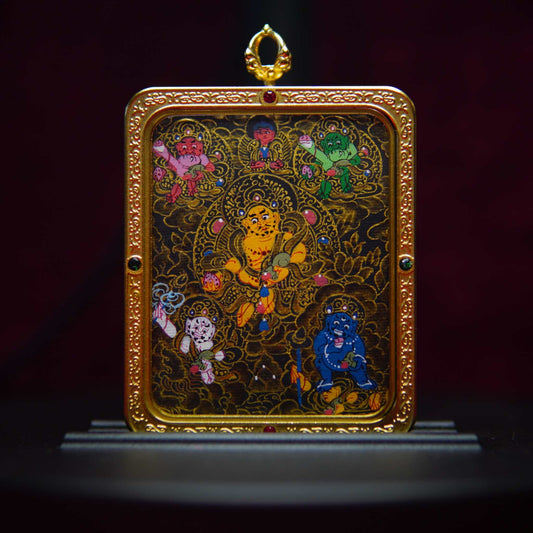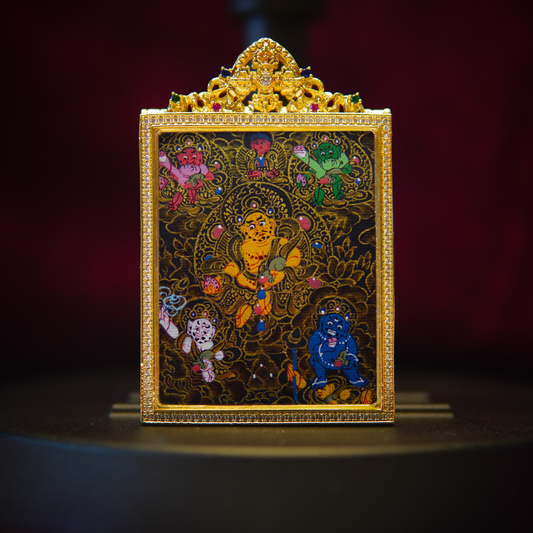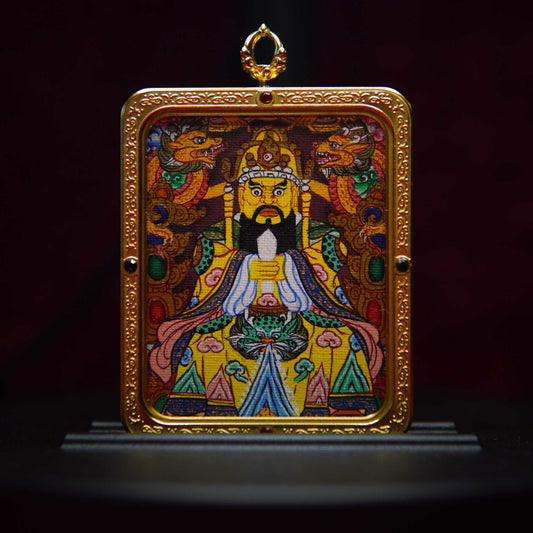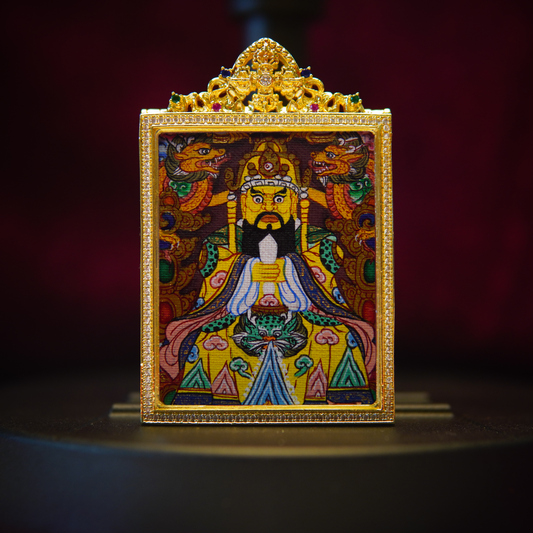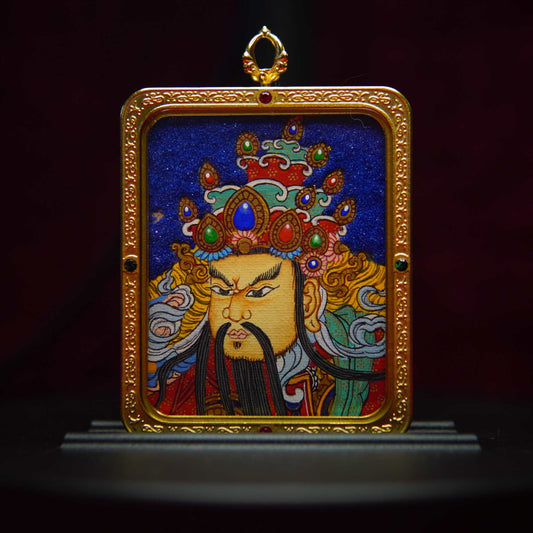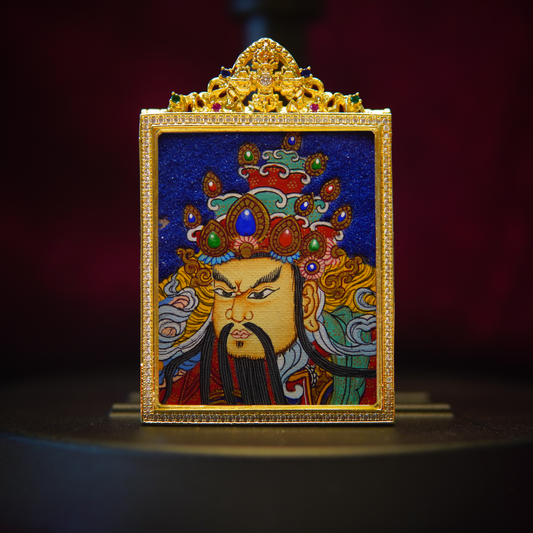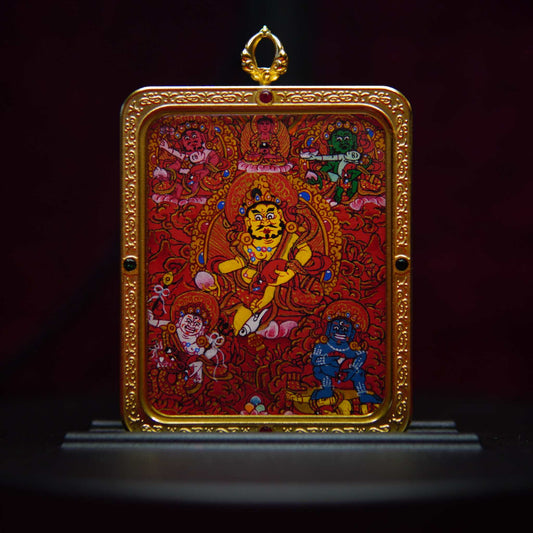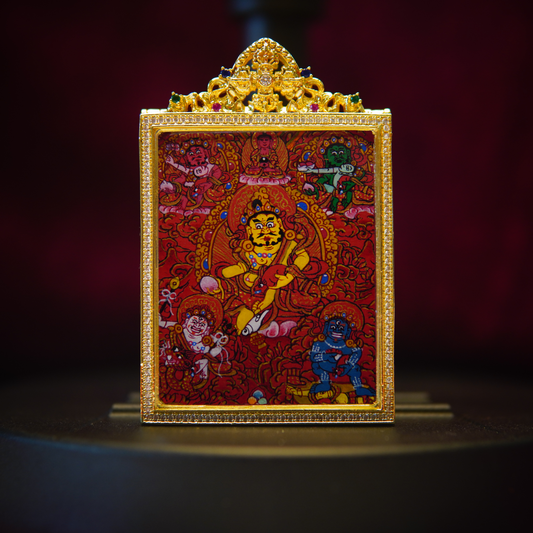What Makes a Thangka Valuable or Rare? A Collector's Guide
Tapita- What Makes a Thangka Valuable or Rare? A Collector's Guide
- 🧵 1. Authentic Hand-Painting (Not Mass-Printed)
- 📅 2. Age & Provenance
- ✋ 3. Artistic Lineage & Craftsmanship
- ✨ 4. Use in Ritual or Blessing
- 🧭 5. Subject Matter & Rarity of Deity
- 📿 A Note on Thangka Pendants
- 🛑 What Doesn’t Make a Thangka Valuable
- 🙏 Final Thoughts
From sacred altars in Himalayan monasteries to curated galleries in New York and LA, Tibetan Thangka art is gaining attention—not only for its visual beauty but for its cultural and spiritual value.
But not all Thangkas are created equal.
So what exactly makes a Thangka valuable, rare, or worth collecting?
Whether you're a seasoned art collector, a spiritual seeker, or just curious, this guide will help you understand the key qualities that give a Thangka both market value and energetic significance.
🧵 1. Authentic Hand-Painting (Not Mass-Printed)
The most valuable Thangkas are painted by hand—often with meticulous detail using natural pigments made from minerals like lapis lazuli, malachite, and gold dust.
-
❌ Mass-produced or machine-printed Thangkas, even if beautiful, hold little to no artistic or spiritual value.
-
✅ Hand-painted pieces, especially by trained lineage artists, are time-intensive and unique.
Look for brushwork variation, fine line detail, and surface texture that suggests human touch.
📅 2. Age & Provenance
While age doesn’t always equal value, it certainly contributes.
-
Antique Thangkas (typically 100+ years old) are rare, especially in pristine condition.
-
Thangkas with documented history—such as monastery origin or prior ownership by a lama—can significantly increase in value.
-
A newer Thangka blessed by a recognized master may still hold immense spiritual and collector value.
Tip: Always ask for any available documentation or blessing certificates.
✋ 3. Artistic Lineage & Craftsmanship
Not all artists are the same. In Tibet and Nepal, some Thangka painters train for decades under established masters.
What makes craftsmanship stand out?
- Balanced proportions (according to iconographic tradition)
- Rich but not overly commercial colors
- Fine detail—especially in the face, eyes, and hands
- Proper iconography (e.g., number of arms, attributes, mudras)
Serious collectors seek works from studios or artists with ties to authentic monastic traditions.

✨ 4. Use in Ritual or Blessing
Some Thangkas are not only painted—they’re consecrated, meaning they’ve been used in rituals, blessed by monks, or even infused with mantras sealed behind the canvas.
These Thangkas carry not just artistic or monetary value, but spiritual power.
-
Thangkas used in retreats, empowerments, or initiations are considered especially potent
-
Some wearable Thangka pendants contain mantra scrolls, prayer flags, or even protective ashes
The spiritual energy embedded in a consecrated Thangka cannot be replicated by machines or décor copies.
🧭 5. Subject Matter & Rarity of Deity
Some deities are more commonly depicted (e.g., Chenrezig, Tara), while others are considered rare or esoteric, and thus more sought-after by advanced practitioners and collectors.
Examples of high-value subjects:
-
Vajrabhairava or Kalachakra Mandala (complex, wrathful protectors)
-
Thangkas of Guru Rinpoche (Padmasambhava) featuring 8 manifestations like Pema Jungne
-
Rare protectors like Rahula, Palden Lhamo, or Yamantaka
-
Unusual combinations (e.g. 21 Taras in one canvas, or triple-deity thangkas)
In wearable form, these are often adapted into pendants for those who seek both beauty and energetic resonance.
📿 A Note on Thangka Pendants
Modern adaptations have made it possible to carry this sacred art on your body.
At Zendo Thangka, we offer hand-painted Thangka pendants, each featuring sacred imagery like:
-
Yellow Dzambhala for wealth
-
Vajrapani for protection
-
Green Tara for compassion and clarity
-
Guan Gong for strength and fortune
Each pendant is created using miniature traditional painting techniques and may contain mantra scrolls or protective blessings inside—adding to both personal value and spiritual energy.
🛑 What Doesn’t Make a Thangka Valuable
-
❌ Bright tourist-market copies with plastic glitter or foil backgrounds
-
❌ Incorrect iconography or sloppy proportions
-
❌ Printed canvases labeled “handmade” but lacking detail
-
❌ Items treated purely as trend décor with no context
In short: if it looks mass-made, it probably is.
🙏 Final Thoughts
A valuable Thangka isn’t just measured by price—it’s measured by presence.
The time, devotion, lineage, and sacred symbolism behind each piece make it more than art. Whether you hang it in your home, place it on your altar, or wear it close to your heart, a true Thangka invites you to connect with something timeless, powerful, and deeply human.
Collect with respect. Display with purpose. And let the art speak.

